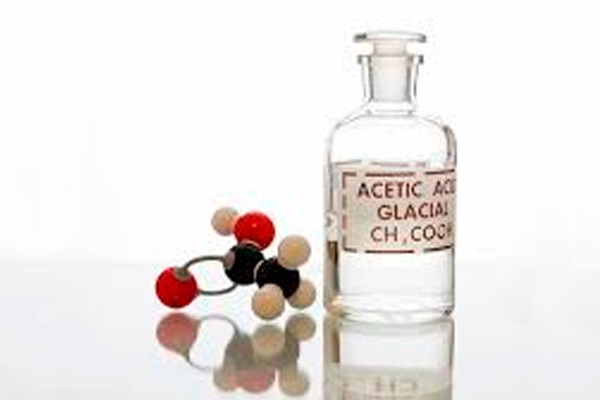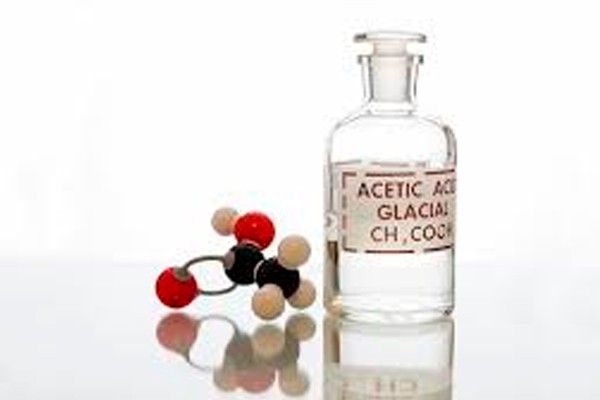
Acetic Acid Disposal: Safeguarding Health and Environment. Ethanoic acid’s versatile applications demand responsible handling. Explore safety measures and disposal guidelines for a secure ecological balance.
Table of Contents
How is Acetic Acid Disposed?
The disposal of acetic acid requires adherence to specific safety protocols to prevent harm. The process begins with the selection of appropriate containers for transportation and storage, a step that must approve utmost attention. These containers must be made of materials that are inert to acetic acid to avoid any chemical reactions. Additionally, the containers should be tightly sealed and correctly labeled to indicate the hazardous nature of the contents.
Once the acetic acid waste reaches the disposal facility, it undergoes neutralization. This process involves the use of reagents to lower the concentration of acetic acid to an acceptable level. The resulting mixture is then further processed based on the specific regulations and requirements of the disposal facility, ensuring that it does not contaminate the environment. In some cases, the waste may undergo additional treatment methods, such as adsorption or coagulation, to remove any solid impurities.
How to Handle Acetic Acid Safely

Image by Clker-Free-Vector-Images from Pixabay
Handling acetic acid requires proper care and attention to ensure personal safety. When dealing with ethanoic acid, it is crucial to ensure you equip yourself with the necessary protective gear. Minimizing the possibility of skin, eyes, or clothing coming into direct contact with the substance helps avoid burns or chemical exposure.
Moreover, it is crucial to work in a well-ventilated area to avoid inhaling acetic acid vapors. If working in a confined space, the use of a fume hood or local exhaust ventilation system is highly recommended. These precautions help prevent respiratory issues and potential long-term health effect associated with acetic acid exposure.
Can Acetic Acid be Disposed of Down the Drain?
Acetic acid solutions with a concentration of less than 5% can be discharged into the drain after neutralization. This process should be carried out in a fume hood, as vapors and heat may be released. Personal protective equipment should be worn before dilution and neutralization.
However, it is important to note that this disposal method is only suitable for small quantities of acetic acid. If you have a large volume of acetic acid to dispose of, it is best to contact a professional hazardous waste disposal service.
Step-by-Step Guide to Self-Disposal of Acids:
1. Select a container with a volume at least twice the final volume after neutralization. Slowly add the acid to cold water to dilute it to 5%.
2. Prepare a 5% solution of sodium carbonate, calcium hydroxide, or sodium hydroxide for acid neutralization. The use of a carbonate solution helps indicate when neutralization is complete, as bubbles cease to form.
3. Slowly add the basic solution to the diluted acid at a ratio of 6 (or preferably 8) to 1.
4. Pour the resulting mixture into the drain while simultaneously opening the water tap. Allow it to drain for several minutes after emptying the container.
Following proper disposal guidelines helps prevent environmental contamination and ensures the responsible handling of acetic acid waste in accordance with regulatory requirements.
Proper Health Care for Acetic Acid Exposure

If one comes in contact with acetic acid accidentally, chemical must be washed off with plenty of water for at least 15 minutes. If irritation or burns occur, seeking medical attention is necessary. Similarly, if acetic acid gets into the eyes, they should be rinsed with water for at least 20 minutes, and medical assistance should be sought.
In cases of inhalation of acetic acid vapors, it is important to move to an area with fresh air immediately. If symptoms such as coughing, difficulty breathing, or chest pain persist, medical attention should be sought promptly. It is advisable to provide medical professionals with detailed information about the exposure to ensure appropriate treatment.
Common Uses for Acetic Acid
Acetic acid, an adaptable chemical compound, boasts an expansive presence across an array of industries. Within the realm of gastronomy, it acts as a preservative, endowing vinegar with its unmistakably tart taste. Venturing beyond culinary domains, this chemical luminary assumes a pivotal position in the synthesis of plastics, dyes, solvents, and pharmaceuticals, making substantial contributions to the tapestry of fabric production, adhesives, and potent cleaning formulations.
In households, acetic acid wears the hat of a potent cleaning agent, effortlessly tackling stains, unclogging drains, and neutralizing odors. Its antimicrobial prowess makes it a go-to disinfectant for kitchen surfaces and bathroom fixtures. However, exercising caution in handling acetic acid, even in routine household tasks, is paramount to prevent accidental exposure and ensure safety.
Is Acetic Acid Hazardous?
Acetic acid poses risks due to its corrosiveness and potential harm to health. Contact can result in severe burns, and prolonged exposure to vapors may lead to respiratory issues. Handling and disposing of acetic acid must strictly adhere to state and environmental regulations.
How Do You Handle 100% Acetic Acid?
When it comes to working with 100% acetic acid, extreme caution must be taken and is best left to professionals or individuals with prior experience. This is because of its high reactivity and the possible issues which could arise, such as corrosiveness and flammability. It is therefore essential that all safety protocols and guidelines are adhered to when handling this concentrated solution. For safe handling and disposal, professional disposal services should be consulted.
Acetic Acid Disposal
Proper storage of acetic acid is essential to prevent accidents and minimize risks. When storing acetic acid, it should be kept in a cool, dry, and well-ventilated area away from sources of heat or ignition. The storage area should be equipped with appropriate safety measures, such as fire extinguishers and spill containment materials.
When it comes to disposal, it is important to follow the guidelines provided by local and federal regulations. Small quantities of acetic acid with a concentration of less than 5% can be safely disposed of down the drain after dilution with water. Larger volumes or higher concentrations of acetic acid should be handled by professional hazardous waste disposal services.
Tips
· Always use acetic acid in well-ventilated areas.
· Wear appropriate protective gear, including gloves and goggles.
· Consult local and federal regulation for proper disposal methods.
· Have a reliable source of water nearby for immediate rinsing in case of contact.
· Educate yourself and others on the potential hazards of acetic acid.
Warnings
· Never mix acetic acid with other chemicals or substances without proper knowledge or guidance, as it can lead to dangerous reactions.
· Avoid storing acetic acid near incompatible materials, such as oxidizers or flammable substances, as it may increase the risk of accidents or chemical reactions.
· In case of any spills or leaks, follow the appropriate spill response procedures, including containment, neutralization, and proper disposal.
Conclusion
In conclusion, navigating the realm of acetic acid requires a balanced approach of knowledge and caution. Prioritizing safety, understanding proper disposal methods, and being aware of potential risks are key to a secure working environment. Whether you encounter acetic acid in daily life or professional settings, responsible handling ensures not only personal safety but also safeguards our environment.

